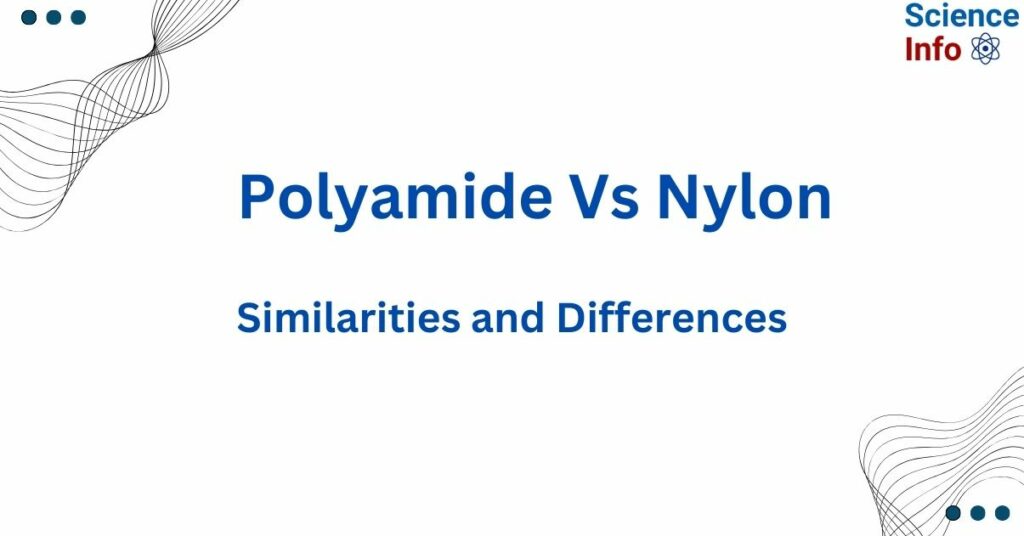
The differences between polyamide and nylon are due to unique properties within the larger category of synthetic polymers. Their shared amide connections provide remarkable mechanical qualities, making them useful for a wide range of industries. Polyamide and nylon’s extraordinary qualities continue to drive growth and innovation in a variety of sectors, including materials, vehicle parts, plastic design, and athletic gear. As technology advances, we may expect increasingly more advanced standards and applications for these adaptable materials, broadening their reach and impact on modern industries.
Interesting Science Videos
Polyamide Vs Nylon
Polyamides are polymers made up of repeated units connected by amide linkages. An amide group has the chemical formula CONH2. These repeating components, known as monomers, differ according to the type of polyamide. Polyamides can be both natural and synthetic. These are high-performance thermoplastic elastomers known for their high service temperatures and solvent resistance. Furthermore, these polymers offer high modulus and impact properties, a low coefficient of friction, and excellent abrasion resistance. Nylon is the most popular and commonly used kind of polyamide.
These polar groups enable polyamides to form hydrogen bonds between chains, hence increasing interchain attraction. This feature of the polymer material improves the mechanical qualities of polyamide.
As the number of carbon atoms between the amide linkages increases, the material’s strength and stiffness decrease. As a result, the length of the hydrocarbon backbone is an important feature that influences the performance of polyamide materials. Because of the polarity of the amide group, polar solvents, particularly water, can damage polyamides.
Nylon
Nylon is a type of synthetic polyamide composed of carbon and hydrogen monomers that form chains containing amide groups by a process known as “condensation polymerization. This is a mechanism when water is lost between two monomers. In its synthesis, a dicarboxylic corrosive and a diamine undergo a build-up polymerization reaction.
Different varieties of nylon are produced depending on the monomers used and the handling circumstances. Nylon fibers are long-lasting, do not absorb water, are shiny, elastic, incredibly strong, and resistant to oil and many chemicals. They also dry quickly. Nylon is impossible to identify without the use of special methods since it lacks distinguishing visual qualities. A material’s melting point or density can be used to identify whether it belongs to the nylon group.
Common properties of polyamides and Nylon
- Both are polymers having amide linkage.
- Both are used for the consumer product.
- Both polyamides and nylon are extremely rigid, making them suitable for applications requiring materials to endure significant stress or impacts. This feature has contributed to their widespread use.
- Polyamide and nylon are notable for their exceptional wear and impact resistance. This feature makes them great material choices for applications requiring constant friction and contact with hard surfaces, such as pinion wheels, orientation, and transport lines.
- While both nylon and polyamides are water resistant, nylon absorbs more water than other polyamides. This can be useful in some situations but may cause problems in others.
- The melting points of different polyamides and nylons vary based on their chemical composition.
- They have high strength.
Differences between polyamide and nylon
| Terms involve | Polyamide | Nylon |
| Definition | It is a type of polymer formed by connecting an amino group from one molecule to a carboxylic acid group from another and is used to generate many synthetic fibers such as nylon. | They are thermoplastic polyamide polymers, a class of exceptionally durable synthetic materials that are mostly used in fibers. |
| Types | It is further divided into aliphatic, aromatic, and semi-aromatic. | It is a semi-aromatic polyamide and is further divided into other different categories. |
| Abrasion resistance | It varies depending on the type of polyamide. | They have high abrasion resistance. |
| Friction | It varies depending on the type of polyamide. | They have a low coefficient of friction. |
| Types of polymer | It can be synthetic and natural. | It is a synthetic polymer. |
| Chemical structure | It depends on the specific arrangements of monomers on their molecules. | It is highly polar and symmetrical. |
| Moisture absorption | It depends on the type of polyamide. | It has a high moisture absorption ability. |
| Strength | Other polyamides are less durable than nylon because polyamide has a lower melting point and is less resistant to strain when stressed. | They are stronger than polyamide because of their high melting point, allowing them to be stretched to maximum length without breaking. |
| Mechanical property | It varies depending on the type of polyamide. | It has a high modulus which affects its mechanical properties. |
References
- https://www.fictiv.com/articles/polyamide-vs-nylon-a-comparison-guide
- https://www.vedantu.com/chemistry/polyamide
- https://matmatch.com/learn/material/polyamide-nylon
- https://www.xometry.com/resources/materials/polyester/
- https://www.differencebetween.com/difference-between-nylon-and-polyamide/#:~:text=The%20key%20difference%20between%20nylon,is%20a%20type%20of%20polyamide.
- https://www.madearia.com/blog/polyamide-vs-nylon-what-is-the-difference/
